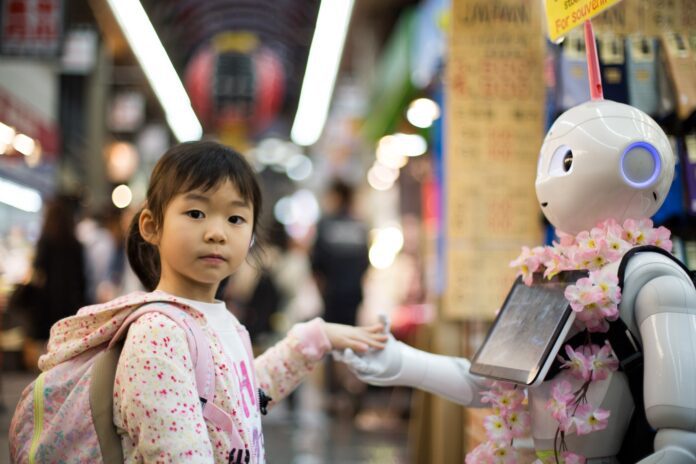Autonomous guided vehicles (AGV) or autonomous mobile robots (AMR) that are used to deliver food, groceries, or parcels from retail warehouses to the doorsteps of customers are called delivery robots. They are also known as last-mile delivery robots. In most supply chains, the final phase of the product delivery from warehouses or distribution hubs to end users holds a share of ~28% of the total transportation costs of products. Various factors affecting the last-mile delivery of products are congestion in urban areas, remote delivery locations, invalid or incorrect address details, hard-to-locate destinations, and lack of labor for offering on-demand delivery services. All these factors hold back the optimization of the final phase of the product delivery. Delivery robots are expected to reduce the impact of these factors and are anticipated to be adopted worldwide for last-mile delivery during the next four to five years.
The delivery robots market was valued at USD 146 million in 2020 and is projected to reach USD 957 million by 2026; it is expected to grow at a CAGR of 35.1% from 2021 to 2026. The rising adoption of robots for the delivery of groceries, food items, parcels (e-commerce), and medicines, as well as to carry out hospitality services, is the key factor driving the growth of the delivery robots market globally. The impact of the COVID-19 on the delivery robots market has been positive considering the overall market scenario. However, a few market players witnessed a decline in their revenues during certain quarters of 2020.
The ongoing pandemic has put a global spotlight on delivery robots for contactless package deliveries. The eradication of the COVID-19 will require everyone to follow physical distancing. Thus, to decrease the risk of contamination, the demand for non-contact deliveries has increased sharply across the world. A number of retail marts in the US have adopted delivery robots during the lockdown period in 2020 to deliver groceries, food items, etc., to the doorsteps of customers. For instance, Broad Branch Market, a local shop in Washington DC (US), used delivery robots of Starship Technologies during the lockdown for delivering various products from the shop to the doorsteps of customers. The same trend has been observed in a
number of other countries worldwide wherein these robots were either not used, or their use was negligible. For instance, in May 2020, Rappi, a Colombia-based on-demand delivery startup, deployed a fleet of robots, developed by Kiwi Campus (US), to deliver groceries or food items to people during the lockdown. However, the stringent regulations regarding operations of delivery robots in various countries worldwide have been the key factor limiting their deployment. For instance, till March 2018, no startup had secured a permit for road testing of robots in San Francisco (US). In January 2021, Walmart received the first permit of California to deploy delivery robots. “The ever-increasing trend of contactless delivery owing to the COVID-19 pandemic is expected to increase the demand for delivery robots worldwide in the next few years,” said Sachin Garg, Associate Vice President, Semiconductor and Electronics at MarketsandMarkets.
With the flourishing e-commerce industry globally, customers are not only demanding but are also inclined to buy top-quality goods at low prices. The introduction of delivery robots in the e-commerce sector is expected to not only offer significant convenience to customers for buying products at reduced costs but is also expected to alter the competitive landscape of the market. In the traditional product delivery method, labor costs held a share of ~75% of the total delivery costs of products, while the remaining 25% share included vehicle costs and fuel expenses. The deployment of robots for product delivery is expected to significantly reduce labor costs, constituting only 20—25% of their total delivery costs. As a major portion of expenses to operate a business in this market includes the cost of vehicles (including costs of fuels, lubricants, tires, etc.), along with the cost of vehicle maintenance and repair, the total expenditure on the deployment of delivery robots is estimated to be ~40% lesser than the costs involved in the traditional delivery methods. “The prevailing trend of e-shopping is expected to fuel the demand for delivery robots specifically from the e-commerce industry,” said Nikhil R. Kumbhar, Senior Research Analyst, Semiconductors and Electronics at MarketsandMarkets. Delivery robots consist of two main components, namely, hardware and software. Hardware components commonly used in delivery robots include global positioning systems (GPS), cameras, radars, ultrasonic/LiDAR sensors, control systems, wires, motors, batteries, drive wheels, and relays. LiDAR sensors installed in these robots provide them high-resolution, three-dimensional information about the surrounding environments. These sensors not only locate the position of people and objects around robots but also assess the speed and route at which they are moving. This information is then used by onboard computer systems to determine the safest path to the destination of delivery robots. Fleet management and computer vision are key software components of delivery robots.
Even though delivery robots have a high potential to conduct contactless last-mile deliveries, the limited coverage area (2–5 km) of these robots is restricting their use in various industries such as e-commerce and food and beverages worldwide. In the next two to three years, delivery robots are expected to be able to cover large areas owing to ongoing technological advancements in LiDAR sensors and upgrading of the collision detection and avoidance algorithms. Several venture capitalist firms are offering funds to various companies developing delivery robots. For instance, in January 2021, Starship Technologies raised a funding of USD 17 million for enhancing its delivery robots. With the ever-growing demand for contactless delivery of products owing to the COVID-19 and increasing funding from various venture capitalist firms worldwide for the development of new and advanced delivery robots, the market for them is expected to grow at a significant rate during the next five to ten years.






